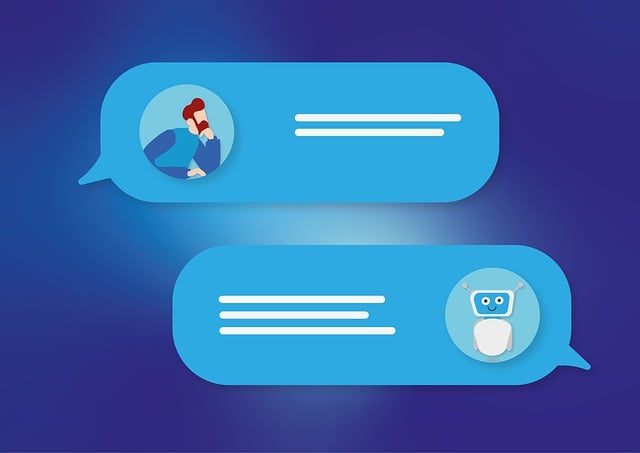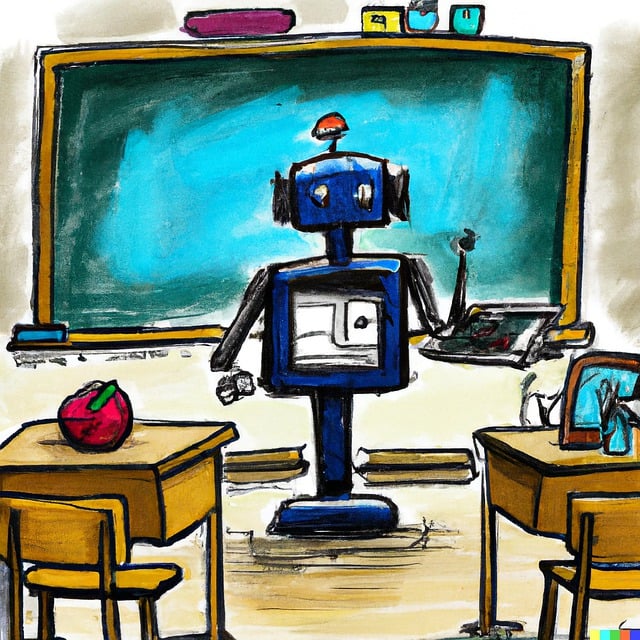AI is going to become increasingly embedded in our everyday lives. With the arrival of advanced conversational AI such as ChatGPT, and a growing myriad of others, information is now easier to find than ever before. This also means that how you currently learn a new language may change, or be altered from the more traditional methods. AI can personalise your learning experience and help give you specific answers for areas you need improvement on.
There are several advantages to using AI for language learning, but you may be wondering how to actually incorporate AI into your language learning toolbox. Below are some suggestions for incorporating AI, especially ChatGPT, into your language learning, and some of the answers may surprise you. There are also some warnings that need to be heeded when using AI for learning a new language, as it certainly does not mean that all other methods of language learning are obsolete or useless.

What Is Conversational AI?
You may have heard AI systems such as ChatGPT referred to as Chatbots. While Chatbots are a form of Conversational AI, they are limited in their responses. Conversational AI, however, is more “open” in that the responses can be more human-like rather than pre-programmed.
For language learning, conversational AI is what we’ll be using.

Advantages Of Conversational AI For Learning A Language
One of the clear advantages of conversational AI is that we now have access to an unlimited amount of sentences in your target language!
This means instead of trawling through the internet or books trying to find stories that you enjoy and are at your level, instead, you can now simply use a conversational AI to give you sentences or short stories in your target language.
An example of this is typing into your conversational AI (I mostly use ChatGPT), a prompt such as “Write me a short story in Maori, 100 words long”. This will give you a short story using that language (including languages that use other alphabets). Repeating this same prompt will give you different stories. You can expand on this prompt as well, which will be discussed in depth in another post.

Conversational AI Text To Voice
To take this even further, once you have received the text from your conversational AI, you can use a variety of methods to turn the text into audio, which will help with some of the pronunciation.
One way this can be done is by using plugins on your web browser that will allow the conversational AI’s response (for example, ChatGPT), to be spoken as well as written. This means that not only can you be practising your reading skills, but you also have the ability to practice your listening skills at the same time.

Speaking With Conversational AI
Technology has brought us even further than simply having conversational AI sharing their information using text and audio. There are options for you as to speak your prompt rather than write it to the conversational AI. This is again done through a variety of ways including plugins and browser extensions.
The benefit of this is that you are able to practice your own speaking skills – to some degree – if you prefer to try to perfect your fluency and pronunciation rather than your writing skills. Of course, there are some downsides to this as well – speaking a foreign language to an AI is sure to have some issues in understanding, and will not be able to correct you. The benefit is that you will be able to practice in a safe environment where you do not need to follow a script. This will also give you a good gauge of your vocabulary and ability to find the right words at the right time.

Concise Grammar Explanations
One of the largest issues you may face when speaking with a native speaker is that they don’t know the grammar rules well enough to explain them to you. This is quite natural – they could probably explain with confidence the word order for different sentences, but this would be based on if they feel right.
For example, I could tell you that it is more correct to say “The red car is over there”, while a native Spanish speaker learning English may say “The car red is over there”. I can’t explain grammatically what the rule is that defines this word order, which means that the Spanish speaker might make the same mistake again because they don’t know the rule.
A conversational AI, on the hand, would be able to explain that in English, adjectives are placed before the noun. This is much more helpful for a learner of the language and a particular benefit that can be gained by Chatbots.
Despite this, however, keep in mind that while precise grammar rules may be given by conversational AI, language itself is a living thing. Often, when we speak, we will omit words, make up new words, or simply say words in the wrong order. This means that while a conversational AI can give the technically correct grammar rules, you may find a slight disconnect between this and real-life language.

Disadvantage Of Conversational AI For Learning A Language
At the end of the day, ChatGPT and other conversational AI are only able to give back information that they have received. This is commonly known as “garbage in, garbage out”. This means on a low level that if your query is not direct or specific enough, you may not receive an answer that satisfies your question. This also has the potential to give you a biased, incomplete, or wrong answer, depending on your question.
This means if you are looking to understand a particular grammatical point, you will need some level of knowledge to know what kind of question to ask. Otherwise, your questions will be vague and broad, which may or may not give you the response you’re looking for.
This still means that textbooks are still going to be helpful to give you some understanding of general grammar in your target language.
One of the assumptions many people make about the rise of conversational AI is that humans need to think less. I don’t agree that this is the case. As mentioned, garbage in, garbage out, means that we still need to make sure that we are thinking about what results we are looking for and give as specific prompts as possible.
Once a result has been given, you will still need to read the information and take it on board – your conversational AI might do the heavy lifting in terms of finding the information, but you will still need to incorporate that knowledge into your language learning.

Learning Vocabulary
Using a conversational AI to learn a language can only take you so far. While you could ask your conversational AI to give you a quiz on some vocabulary, you would need to specify the words you want to be quizzed on. You would also need to ensure that you specify the tolerance to capitals, articles and any special characters in your responses.
In short, using a conversational AI to practice vocabulary is not the more efficient method by any stretch. The ability to practice vocab using spaced repetition systems, such as Anki, is far superior in essentially every aspect. If you want to know more about Ank, you can find out in this post here.
While a conversational AI may not be useful (yet) in quizzing you on new vocab, it can certainly help you find and create your vocab lists in a format that a system such as Anki can use. Be careful using this, however, as there is a chance that your conversational AI will give you duplicate words that you already have. If you are particular with how your flashcards are set out, you may need to be very specific in the prompt that you give your conversational AI to make sure that new vocab is in the same format.
Finally, using a conversational AI to give you vocab may only take you so far. It won’t be able to give you any new words since its cut-off date of knowledge, and it probably won’t know what words it’s previously given you if you are asking for words during different sessions.
If you need more information about how to specifically learn more vocabulary in your language, I would recommend either starting with Duolingo, if your language is supported. While using Duolingo, or towards the tail end of it, you could also start to use Spaced Repetition Systems such as Anki which is a highly recommended method of vocabulary learning.

Knowledge Cut-Off Date
Many conversational AIs have cut-off dates for information that they have access to, which can have implications on what information you can receive from them. As of writing this post, ChatGPT’s cut-off of information of the real world is September 2021. This means that it is almost 2 years behind the times, which for the purposes of learning a new language, will mean there are some areas it will have little to no current knowledge. An example of this is slang.
I asked ChatGPT to give me a 100-word story in English using slang. While some of the slang was still current, such as “lit”, other words such as “chillax” is – at least in my part of the world – becoming less in vogue. This makes sense, as ChatGPT’s currency is now almost 2 years old. This means that while it is capable of giving you a gist of current slang in your target language, it won’t be able to give you the most up-to-date slang.
This is where talking to real people will become useful. The benefit of using a conversational AI to learn parts of a language besides slang is that if and when you speak to a language tutor or travel to the country of your target language, you can already speak the language. The main part that would remain for you to learn is slang, which is much easier if you are already quite fluent in the formal language.

Are Conversational AIs Useful For Learning A New Language?
My verdict is that conversational AIs are quite useful for learning a new language. With the increase in artificial intelligence, this tool will only get better.
The variety of plugins and extensions that can be used to make a conversational AI more helpful can be particularly beneficial to learn a language. A word of warning though: a conversational AI is still a form of artificial intelligence. It will only be as good as the prompts you ask, and the information it has access to. Not all the information a chatbot may be correct either, which means that you will need to ensure what you are learning makes sense against – ideally – a native speaker, or at least a textbook.
This means that while, as a learning tool, conversational AI will be useful, there is still much work and learning that you will need to do yourself to ensure you are learning.
- Should Everyone In The World Speak A Universal Language?

- The Power of Immersing Yourself In A Language For Learning

- Start Your Language Learning Journey: Duolingo And Other Methods

- Does Learning A Language Help You Learn How Others Think

- Can You Learn a Language Without Learning Its Culture?

- Unlock Fluent Expression: Sentence Builders Across Languages

- Hidden Gems: Underrated Duolingo Languages Worth Learning

- The Ultimate German Pronunciation Guide

- Where To After Finishing Duolingo For Language Learning









